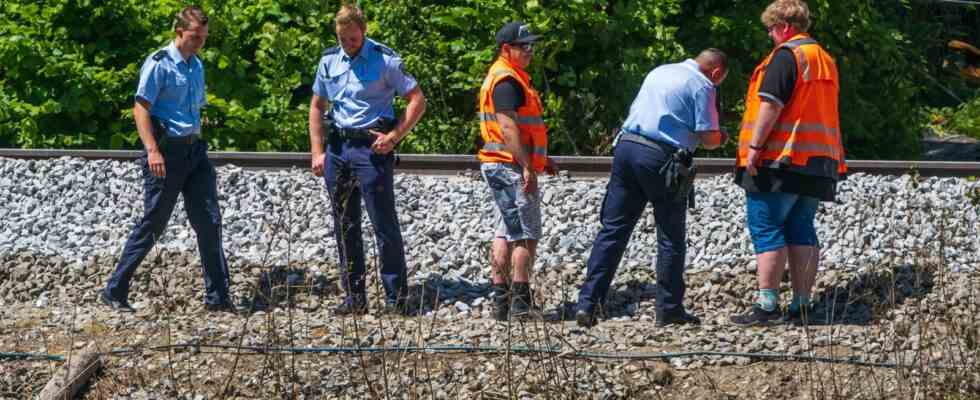Did a railway employee make a mistake? Was a wagon defective, or were the tracks not in order? Five people died in the train accident on June 3 in Burgrain near Garmisch-Partenkirchen. It is still not clear what caused this accident. Much is still speculation, but now a suspicion is emerging.
Did previously damaged concrete sleepers play a role in the accident?
A Bundestag document, which is available to the BR and which deals with the cause of the train accident, speaks of a rail shift, the reason for which was “horizontal fractures in the concrete sleepers” at the accident site, and further of “partially damaged concrete sleepers”. According to the document, pre-damaged concrete sleepers have probably led to “an impermissible lane widening and the loss of lane guidance”.
This raises the suspicion that broken concrete sleepers – i.e. so-called superstructure damage – could have been at least partly responsible for the accident. Since when the railways were aware of such possible damage, the company has not yet commented on Thursday’s request.
After the accident, there were many more slow-moving sections
One thing is clear: the route network of Deutsche Bahn is in poor condition. In many places in Upper Bavaria, especially in the foothills of the Alps, trains are therefore only allowed to travel very slowly. And after the train accident, some of these so-called slow-moving sections were added. These are mostly stretches of a few hundred meters on which the trains have to slow down and on which they are sometimes only allowed to travel at 20 kilometers per hour.
These speed restrictions can have various reasons, for example dilapidated bridges, construction sites or mowing work. Another reason for slowing down is the so-called “superstructure damage”. The superstructure means the rails, the sleepers and the ballast.
Danger from so-called “superstructure damage”
Suddenly there are many slow-moving sections due to damage to the superstructure, especially in the foothills of the Alps. A Bahn-internal document lists all slow-moving sections in southern Germany that were valid on June 22, i.e. a week ago. It also records since when you have to drive slowly there and why. Due to damage to the superstructure, there are currently almost 20 speed-restricted sections in Upper Bavaria, and all but three were set up in the two weeks after the train accident in Burgrain. Five of them alone on the Munich – Garmisch – Mittenwald route.
The Federal Bureau for Railway Accident Investigation is to provide final clarity on the cause of the accident. However, this has not yet published a report on the accident.

